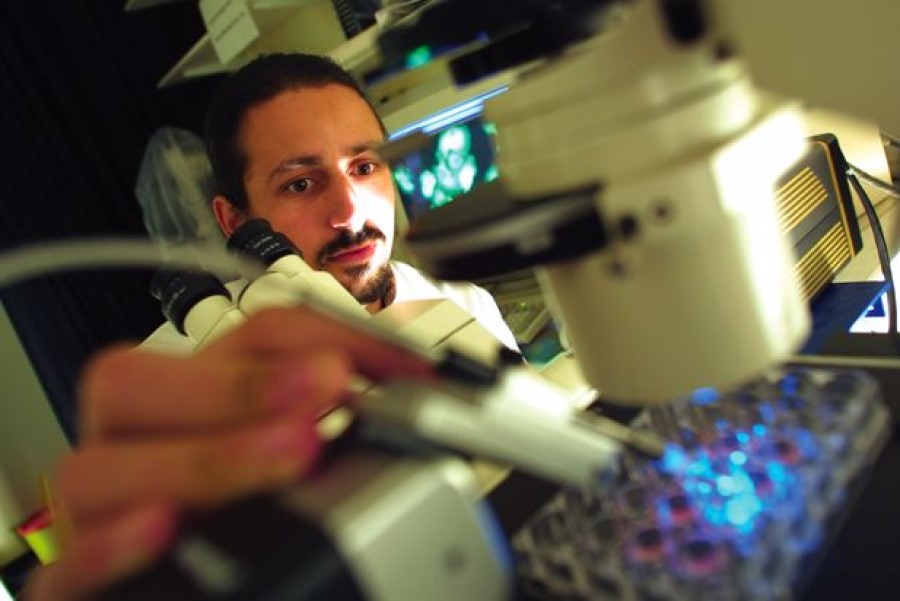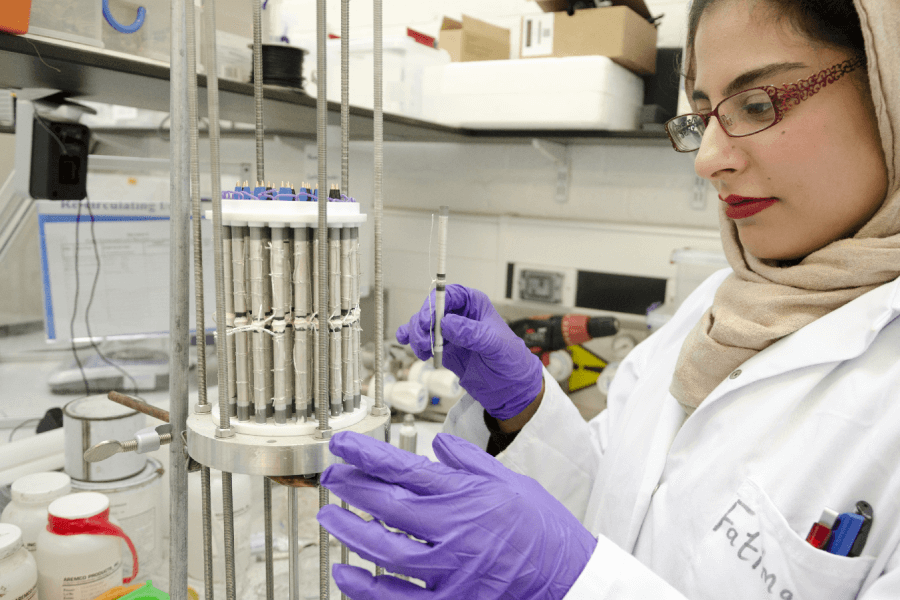
Professor Simon Collinson highlights the significance of University R&D to regional economics in the UK and why this is so important for levelling up.
This blog was first posted on the Birmingham Brief.
The benefits of economic growth and wealth creation are usually distributed unevenly. Dealing with the increase in socio-economic and spatial inequality requires consistent policies, intelligent government intervention and local leadership. This adds to the challenge of achieving balanced growth under current conditions.
Uneven growth in the UK in recent years has increased the divide between lower-skilled, lower-income (and less healthy) communities and higher earners in more affluent places. Investments that improve regional productivity (higher GVA/capita), or prosperity, can tend to benefit higher-skilled, higher-income communities, often by improving employment prospects for this group more than others. As higher-paid employment opportunities grow in one place, so do living costs, displacing lower-skilled communities, and reducing their access to employment. So over time, improved prosperity can be at the expense of higher levels of inequality, with distinctive spatial divides. The 7-part Index of Multiple Deprivation helps map some of these relationships, linking Income Deprivation, Employment Deprivation and Education, Skills and Training Deprivation, with Health Deprivation and Disability, Crime, Barriers to Housing and Services, and Living Environment Deprivation. All of which presents a difficult trade-off for policymakers who need to intervene and invest in more precise and targeted ways to achieve balanced growth.
The Regional Contribution of Universities
The direct and indirect economic contributions of universities are reasonably well-known. Local procurement, job-creation and spending by staff, students, and visitors, drive multiplier effects, supporting jobs and economic activity more widely. There are also significant cultural and creative, civic and community contributions of various kinds. But universities are also an important source of R&D, innovation, and skills which benefit local firms and public sector organisations.
A report by London Economics suggests that as much as half of the total economic contribution of a university can be attributed to the ‘impact of research and knowledge exchange’. For Oxford University, the focus of the report, this amounts to £7.9 billion (and 28,000 jobs) out of a total impact of £15.7 billion. This is a significant amount and consists of ‘research activities’ (accounting for 29%) and ‘knowledge exchange activities’ (22%). In turn, a sizeable proportion directly benefits the wider region, in this case, an estimated £6.7 billion of impact in the South-East of England. This is more than the impact generated by university spending (£6 billion) and far larger than teaching and learning activities, ‘educational exports’ and the University’s contribution to tourism combined.

What does university-based R&D bring to a region?
R&D investment in universities, via government funding and/or private sector partnerships, creates a wide range of outputs and outcomes. It can:
- Leverage additional, matched investment from business to a specific region focused on a particular area of innovation, strengthening links between basic and applied R&D.
- Attract, directly and indirectly, a larger number of higher-GVA jobs, local investment in facilities, technologies and capabilities, R&D-intensive firms and FDI (foreign direct investment).
- Enhance the innovative capabilities and competitiveness of local firms through technology transfer, knowledge exchange, spill-over effects, and new skills.
- Cause higher levels of student (skills) retention and entrepreneurial spinouts and start-ups, alongside intellectual property (IP) licensing, which also improves attractiveness and inward investment.
- Resulting in agglomeration effects, attracting specialist investment in new industry clusters and a rise in sector-specific entrepreneurship.
Strong alignment between university-based R&D and the local innovation ecosystem helps maximise this impact. This is where the ‘supply’ of technology, skills, entrepreneurial start-ups, or knowledge matches the demand for innovation inputs from local firms and other organisations. Innovation intermediaries (or STEM+M assets) which bridge universities and local businesses, such as the Manufacturing Technology Centre (MTC) or Tyseley Energy Park (TEP) in the West Midlands, can strengthen this alignment, as discussed at a recent Science and Technology Select Committee evidence session. But alignment also relates to the specific kinds of absorptive capacity in a region, and a wider set of economic conditions, including levels of productivity and industry sector specialisation, and local growth challenges from infrastructure limitations to skills gaps.
Where and how can this contribute to regional levelling up?
The above impacts can drive indirect benefits for lower-income communities through multiplier effects across a region. But much more needs to be done to improve the fit between the supply and demand sides of innovation. One approach is to further incentivise universities to focus on local needs and invest more in the kinds of intermediary organisations outlined above. This could, for example, build on the Strength in Places Funding (SIPF) model and Catapults with a regional focus as part of a place-based innovation strategy. By emphasising up-skilling and support for SMEs, and by locating investments in lower-income communities (as in the Tyseley Energy Park example), the levelling-up impacts would be greater.

But R&D investment can also directly target innovation in public services, transport and housing infrastructure improvements, crime prevention and healthcare, reducing the costs and/or raising the quality and improving the living conditions, life chances and opportunities for the most deprived. For example, innovations to improve early diagnosis and better interventions for obesity-related diseases, such as heart disease and type 2 diabetes, would disproportionately help more deprived communities as well as reduced healthcare costs and improve the time taken for sufferers to return-to-work.
All universities can provide examples of similar kinds of contributions they have made, particularly through the Covid pandemic, but a larger volume and wider variety of targeted R&D is needed to cope with the growing disparity between those that have increasingly more income, assets, opportunities, health, and wellbeing and those that have less.
These issues were discussed at a Roundtable hosted by WMREDI at the University of Birmingham and Universities UK (UUK), on Dec. 17th, 2021, organised by DevoConnect and chaired by Lord Bob Kerslake, with a keynote by the Minister for Science, Research and Innovation, George Freeman MP. ‘Levelling Up: The key role of university R&D in unlocking innovation and green growth in places.’
The key learning points and messages that we heard from the many and varied informed and insightful contributions were:
- The Minister and Government ‘get’ that science and innovation are integral to the delivery of the recovery from the pandemic and to the delivery of its two other overarching priorities: levelling up and net-zero
- Building the Innovation Nation must complement rather than damage the UK’s progress towards being a science superpower
- University R&D is already working well and delivering economic benefits especially where it is linked to strong public and private leadership and the skills agenda
- Building the Innovation Nation depends on strengthening as well as increasing the numbers of Clusters of Excellence: these are the sub-national ecosystems focussed around University R&D that will innovate and then nurture the translation of science into growth
- There is a need for the university community to focus on the immediate and practical next steps that will deliver more investment in regional innovation outside the ‘golden triangle’
- UK regions vary significantly in their future growth potential and the degree to which they can translate R&D investment into improved productivity, sustainability, or inclusivity. Public R&D investment can catalyse private sector investment in high-potential regions but needs to be more precisely targeted using improved analysis of these local differences.
- The Government needs to ‘join up’ its approach to innovation funding so that DfE, BEIS and DLUHC work together to ensure HE is more closely aligned to the skills and business agendas as well as those of local and combined authorities.
- The Levelling Up White Paper will hopefully herald a new approach. This approach should include a commitment to more devolution so that Clusters of Excellence can be built ‘bottom up’ to reflect local circumstances, opportunities, and relationships.
View all our work on Levelling Up
This blog was written by Professor Simon Collinson, from The University of Birmingham.
Disclaimer:
The views expressed in this analysis post are those of the authors and not necessarily those of City-REDI / WMREDI or the University of Birmingham.
